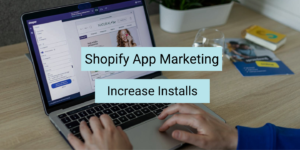Your customer might be shopping on-the-go with multiple tabs and browsers open on his mobile device. He might do the browsing online and choose to buy in-store. Or, it could be otherwise – he might drop in your store to window shop, take your website address, and buy online.
Shopping involves multiple channels and multiple touchpoints. And, the biggest mission for brands today is to provide a seamless experience all across the customer’s journey. Such an interconnected shopping experience where one channel facilitates the other is termed as omnichannel. What do we mean when we say ‘facilitate’? Here’s an example, of how Sephora creates a truly seamless and empowering customer experience where one channel of shopping facilitates the other.
Sephora has done a brilliant job at connecting shoppers’ online purchases to their in-store visits. Customers who drop in, to check out products at Sephora stores can use in-store tablets to access their “Beauty Bag” account while shopping. Using the technology they can ‘virtually’ try on products. If they like what they see, they can add that product to their cart and shop online. Or, they could buy from the store.
You might ask, what’s the reason for the tremendous growth of omnichannel marketing? Well, the prime reason and the most obvious one is the availability of newer channels for connecting with brands. The second most important reason is evolving attention spans. People tend to absorb information quickly and forget it even quicker. Unless they are reminded. As such, tapping into every possible channel of engagement is important.
It’s also important to point out here that it takes at least six to eight touchpoints for a customer to feel comfortable enough to make a purchase. Only a good omnichannel marketing strategy can effectively help craft a seamless experience to provide the same brand experience across all these touchpoints. Disney is a world-class example of how the customer’s experience with the brand can be made seamless throughout. Disney customers can access and use their My Disney Experience via browsers or the mobile app, and manage their entire Disney trip using any device. It doesn’t seem like they have shifted from tab to mobile to a computer, at all. The look, the feel, the functioning – everything is the same on each device.
All said and done, to create your omnichannel strategy, you will need the right tools and the right strategy. Technology and tools will give you the needed insights on your customers, help you reach your target audience at the right time, and bring in more conversions faster. A good strategy will help you do all this will the focus on the right channels of marketing to reap a higher ROI. To get you started, we share an infographic on seven steps to go omnichannel.




